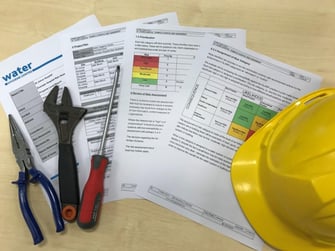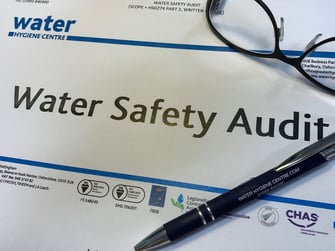
In this blog, we suggest five ways Estates Managers should be prepared to manage water safely…
One: Legionella Training – be informed
Estates Managers and all those with strategic water safety responsibilities can prepare themselves to avoid many of the pitfalls of water safety management by attending a good quality training course. Water hygiene / Legionella training should not only identify and enable you to meet the requirements of the various legislation and guidance but also provide a practical approach to the subject.
The process of a Legionella risk assessment and review is one example of an area that is often misunderstood and commonly leads to poor management decisions - we discuss this further in tip three. HTM04-01 Safe water in healthcare premises suggests a host of elements for inclusion in Legionella training. The Water Hygiene Centre’s training courses have been developed around the requirements of both ACoP L8 and HTM04-01, with the role of the Responsible Person in mind, and cover all the aspects of a Water Safety Plan (WSP).
Two: Independent Advice – don’t be led by vested interest
 Advisors should be able to demonstrate impartiality and integrity and be able to demonstrate sound reasoning for any proposed course of action. An independent advisor can act as an auditor, not only to monitor the effectiveness of the organisation and the performance of any contracted service providers but without the competing influence of commercial interests, workload, or internal politics.
Advisors should be able to demonstrate impartiality and integrity and be able to demonstrate sound reasoning for any proposed course of action. An independent advisor can act as an auditor, not only to monitor the effectiveness of the organisation and the performance of any contracted service providers but without the competing influence of commercial interests, workload, or internal politics.
Time and time again we hear of organisations that are being supported by those with vested interests and without fail we find the advice given has not been impartial, for example, in one case a client was informed that tanks should be cleaned every 3 months!
Three: Quality Legionella Risk Assessments – spend wisely
Our previous blogs discussed what a Legionella risk assessment should include and what makes a good Legionella risk assessor. Choosing your risk assessment provider wisely can save money, time, and effort through potentially ‘hidden’ savings.
 In the first instance, a ‘right-first-time’ approach to a Legionella risk assessment can reduce unnecessary remedial work. On one hand, through the elimination of inappropriate actions adherence to a prescribed list of absolute ‘requirements’ with no consideration of risk.
In the first instance, a ‘right-first-time’ approach to a Legionella risk assessment can reduce unnecessary remedial work. On one hand, through the elimination of inappropriate actions adherence to a prescribed list of absolute ‘requirements’ with no consideration of risk.
Secondly, through the identification of opportunities to significantly reduce or even eliminate ongoing risks e.g. where a storage tank could be removed rather than cleaned and disinfected. In addition to these more obvious savings, further advantages can be gained through the collection and provision of information that feeds logically into the Water Safety Plan.
In summary, choosing a risk assessment that incorporates genuine risk evaluation and prioritisation of actions can assist with long-term budgetary control.
Four: Water Safety Plan – be proactive
 Formulate a plan for water safety management
Formulate a plan for water safety management
(aka a written scheme) that includes:
- A policy statement;
- Details of management responsibilities & communication pathways;
- A process for ensuring Legionella training and competency;
- A process for Legionella risk assessment and water risk assessment review;
- A description of the control strategy for the safe operation of the water systems;
- Procedures for carrying out the chosen control strategy;
- Procedures for monitoring the effectiveness of the control strategy;
- Contingency procedures for foreseeable eventualities of concern, for example where monitoring shows that the control strategy has not been consistently applied or that it is ineffective;
- A review process for reviewing the effectiveness of the control measures and management arrangements;
- Details of the documentation and water safety records to be maintained.
The Water Safety Plan will guide your organisation to successful water safety management.
Five: Water Safety Audit – don’t be complacent
Our final tip is an often-overlooked part of a successful management system. Perhaps, due to budget constraints and the difficulty in assigning value to the process of an audit? Or the fear that often comes with resolving what can [wrongly] be perceived as a large-scale fault-finding exercise.
 However, as we have alluded to in tips two and four, reviewing the effectiveness of the management arrangements and control measures in place is an essential part of successful water safety planning.
However, as we have alluded to in tips two and four, reviewing the effectiveness of the management arrangements and control measures in place is an essential part of successful water safety planning.
A Water Safety Audit completed regularly can provide key assurances that matters are in hand and identify opportunities for improving effectiveness or efficiency. An audit closes the circle by providing the link between what we have in place and the goals we set out to achieve.
Feel free to reach out if you have any questions about the issues mentioned above or if you would like to consult with one of our experts on water hygiene.
Editors Note: The information provided in this blog is correct at the date of original publication - April 2018 (Revised February 2024).
© Water Hygiene Centre 2024








